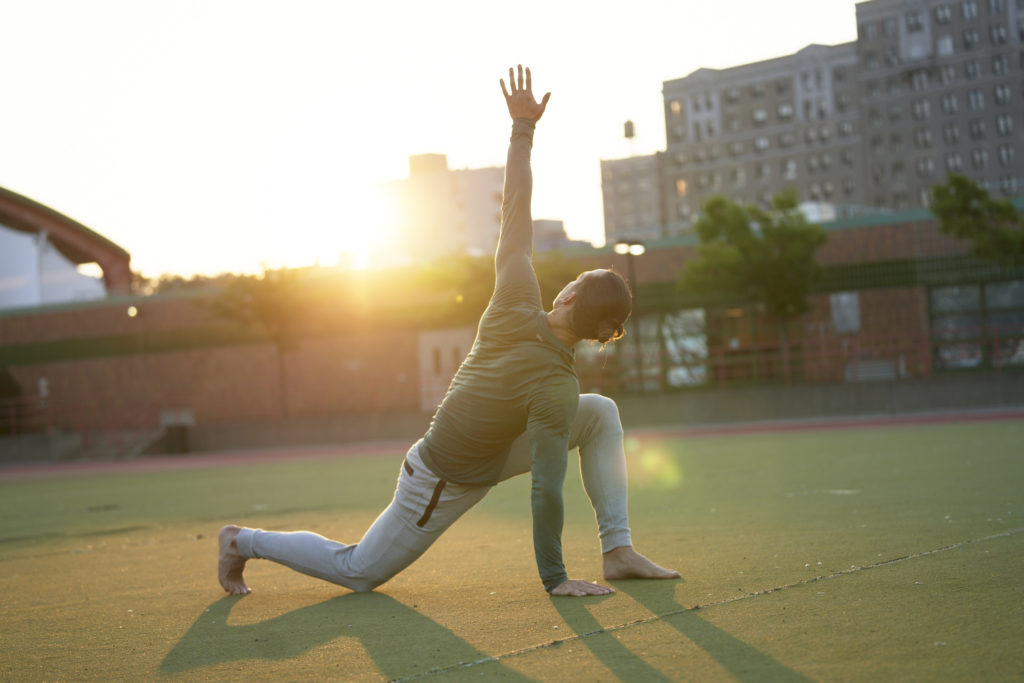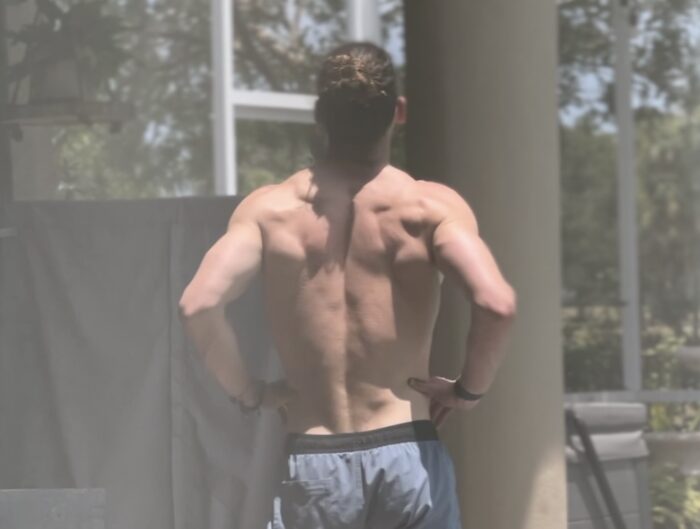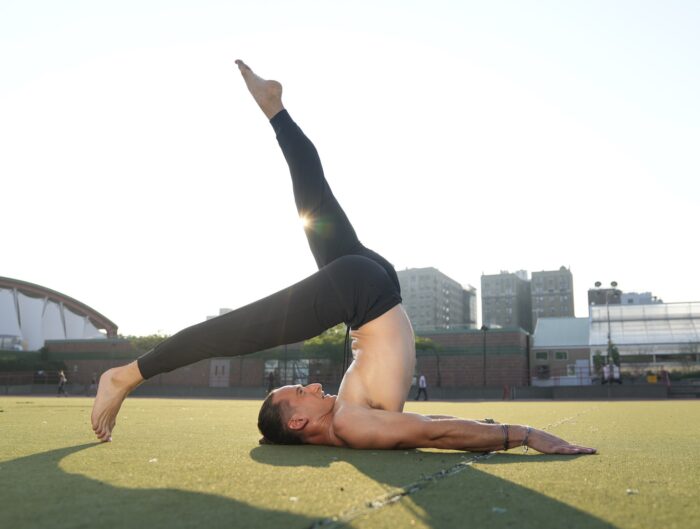I’m always in pursuit of getting fitter, physically and mentally, no matter what. Over the years, I’ve experimented with several strategies, methods, and techniques. What I’ve tested and taken away from those experiences has yielded me the following routine:
It all starts with sleep.
I need to go through my own sleep ritual to fall asleep and stay asleep. After that, I can only hope that my allergies are mild, and if they are not, I use saline spray.
My sleep ritual is: The whole place’s temp drops to about 60-65 degrees. I go through my seated or lying mobility movements. (For that routine, read this.) Then, I hop in a hot shower — I save the cold stuff for the morning as it’s a bit too stimulating at night time for me. I get into bed around the same time, 9PM or so, put my blue light blocking glasses on if I need to read or write. Then, I turn on continuous white noise, it’s basically a mash up of different frequencies that have been scientifically shown to help with sleep. If I wake in the middle of the night, I won’t look at my phone. Want to know more about how I learned to improve my sleep? Read this.
Rise at the same time.
My alarm is set for 5AM or 6AM depending on the day, but I usually wake up before it goes off.
Do a touch of mental work.
Once I’m up, before I do anything at all, no coffee, no food, I open my phone’s notes or physical notepad and write down the key high level objectives of the day. If I put it in my phone, I then always transfer it to paper so it’s right in front of me throughout the day. This is not deep thinking or complex problem solving. This is an interesting brief moment of time where I’m in a state of trance to where I can set up the bones of what the day should look like. The moment I get too detailed it falls apart. This time is 10-15 minutes, tops. The real work comes later.
Take in a mini-breakfast.
Sometimes I fast, other times I snack. It’s usually a small serving of carbs and protein; a half scoop of plant (or whey) protein with 5 grams of creatine along with a side of oats. I then take in 100 – 250 mg of caffeine depending on the upcoming workout.
Shock the system with hot and cold.
After I eat my snack, I take a quick hot and cold shower with slightly more hits of cold worked in. While the caffeine is soaking in, I let the shower contrasting give me a jolt of energy. I start with hot, slowly drop the temperature until I get to bone cold. Once at the cold point, I’ll only breathe through my nose for 10 breaths, then bring the heat back up for 10 seconds or so. I’ll repeat this 3 times.
Crush the physical work for 45-60 minutes.

Every day. This is a nonnegotiable. And “crushing” doesn’t always imply it’s a hard workout, it means consistently showing up and doing what’s best for my body to be strong and mobile. Chances are it’s either: a heavy strength workout, a high-impact metabolic conditioning workout, a long, low-intensity cardio session like a run, row, or ski erg, or low-impact mobility or yoga. Want to know how I’m training in 2023? Check out my January workout plan, my February workout plan, and my March workout plan.
Refuel and rehydrate throughout the day.
After my workout of the day is over I get protein and carbs in immediately. If it was an extra long or tough routine, I’ll increase my portions. From there, I’ll eat every 3 hours or so. Each meal is a serving of protein, carbs, and fats. Curious about my daily diet? Read this.
Follow a 90/20 work to rest protocol for handling business.
Based on our reporting at TORIAL Media, we learned about something called the Pomodoro Technique. This is a time management method for bouts of mental work followed by recovery. Many experts seem to agree on: 90 minutes of mental work followed by a break of 20 minutes. I’ve found this to be very effective at getting things done and can repeat it several times throughout the day. The first 10, 15 or 20 minutes can be a bit of a struggle, or what experts like to call, “friction.” If I fight the friction, I’ll eventually get into flow, then stop at the 90 minute mark and go for a walk or do a series of stretches. I’ll do a minimum of three short walks per day.
Practice breathwork in the gaps of my schedule.
More recently, breathwork has played a crucial role in managing stress for me. Whenever I feel overwhelmed or anxious, I turn to apnea training, my preferred form of breathwork, to regain control and balance. Apnea training involves holding your breath for an extended period while either sitting or lying down, followed by a slow and controlled release of air. This practice not only helps in regulating the nervous system but also enhances mental clarity and focus. By incorporating apnea training into my daily routine, I’ve been able to improve my resilience to stress and maintain a calm, collected demeanor, even in challenging situations. For more on breathwork, read this.
Double-down on things when and where needed.
Foam rolling, deep tissue massage, acupuncture, infrared sauna, and cold showers are some of the recovery practices I integrate where and when needed. For example, I’m constantly using my Hypervolt percussion gun throughout the day on the muscles along my neck (not on the spine!) or quads. I’ll also foam roll or use a lacrosse ball in tight spots in my upper glute area. Ideal world, I’d be getting deep tissue massage as much as possible, but that’s unrealistic. Much of that is icing on the cake. What is above is what’s most important. Want to learn more about my favorite recovery strategies? Read this.







